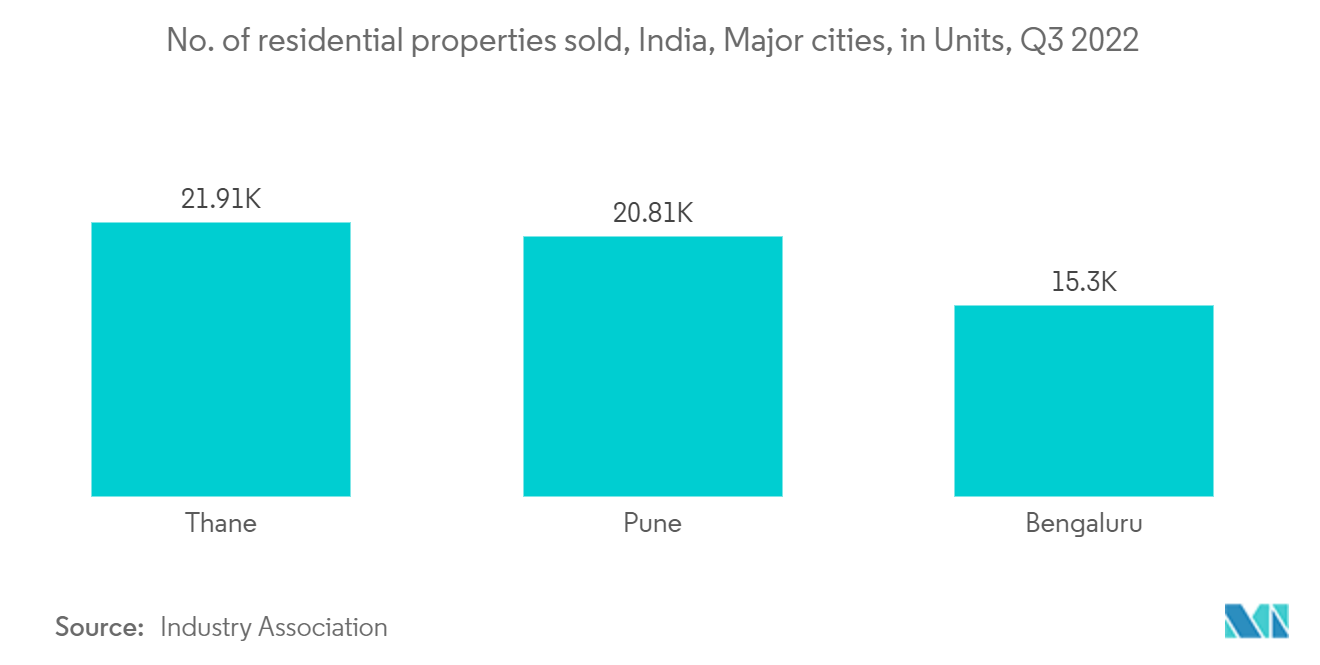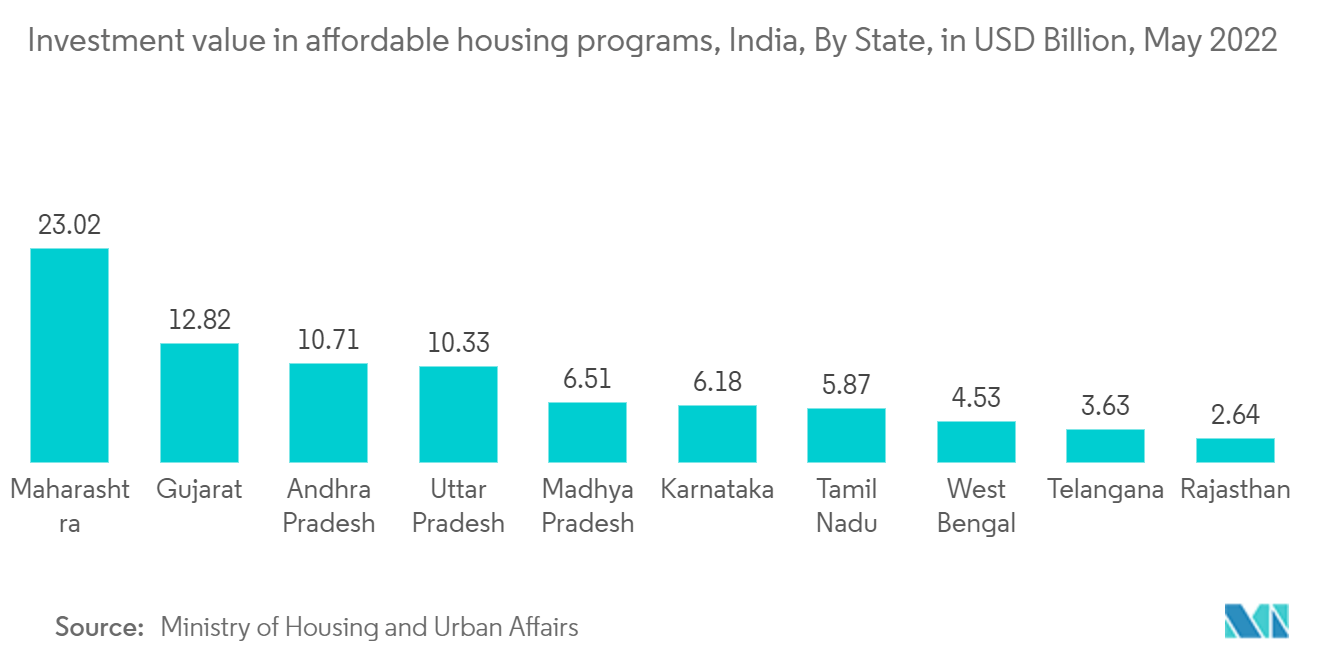Market Trends of India Residential Real Estate Industry
This section covers the major market trends shaping the India Residential Real Estate Market according to our research experts:
Increasing Demand for Big Residential Spaces Driving the Market
- Despite biting inflation and higher interest rates, the real estate market has gradually recovered from COVID-19 lockdowns. According to a new report by industry experts, sales of residential properties in India's top cities increased by 24% in the July-September quarter of 2022 compared to the same period in 2021. According to the report, total sales in the third quarter of 2022 were 1,08,817 units, up from 87,747 units in the same quarter of 2021. This report includes Bengaluru, Chennai, Hyderabad, Kolkata, Thane, Mumbai, Navi Mumbai, Pune, and Delhi-NCR as Tier-1 cities.
- The need for a lifestyle upgrade among homebuyers, low-interest rates, comparatively low prices, and the pandemic's renewed need for home ownership have been the primary drivers of sales growth. Developers strategically responded to the demand momentum and shift in sentiment by launching 160,806 units in H1 2022, 56% more than in the same period in 2021. Mumbai's 44,200 home unit sales volume accounted for 28% of total sales among the top eight markets. Regarding annual percentage growth, home sales in the NCR increased 154% yearly to 29,101 units. NCR had the second-highest share of sales among the country's top eight real estate markets.
- Low-interest rates, the best affordability levels, healthy wage growth, and a waning pandemic with less risk of further disruptions have created a favorable environment for homebuyers who have rediscovered the need for new and better housing. While financial stress remains a significant factor for developers across markets, healthy and sustained homebuyer activity should pave the way for gradual price increases, allowing them to weather increases in critical input costs such as cement and steel.

Central and State Governments Pushing Toward Affordable Housing Driving the Market
- The Indian real estate sector is expected to reach USD 1 trillion by 2030, with affordable housing playing a key role in this growth. With a population growing at a rate of 2.1% per year on average and the low purchasing power of a significant portion of our population, meeting the 40 million urban housing demands once seemed like a distant dream. However, things have changed in the last few years, with the government making several important announcements (some examples) to promote affordable housing. It has emerged as one of the most dynamic segments of the Indian real estate market.
- The technology used to build houses at a faster pace was innovative under the Pradhan Mantri Awas Yojana-Urban (PMAY-U), which was launched to address urban housing shortages, including slum dwellers, by ensuring a pucca house to eligible urban households, particularly the Light House projects in six States as part of the Global Housing Technology Challenge - India (GHTC -India) initiative. The initiative ushered in a new era in Indian construction technology, giving impetus to the Make in India initiative. LHPs will pave the way for a new ecosystem in which globally proven technologies will be used for cost-effective, environmentally friendly, and faster construction. The benefits of these LHPs are numerous, primarily durability, climate resilience, and affordability.
- However, there is still a significant supply shortage in this segment, with more people looking to buy in urban areas where the emphasis has been on high-value properties. While not many financiers were willing to finance customers looking for affordable housing a few years ago, most of the industry's big names are now entering affordable housing to make it a viable business model. They are entering the affordable housing sector to address the market's current demand-supply imbalance. Many such projects have emerged in Tier II and III cities, fueling growth in those towns and cities.


